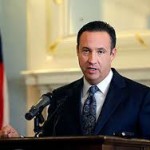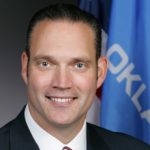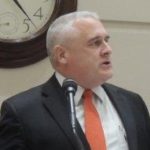By Jason Doyle Oden
The Board of Equalization hit state government and lawmakers with a double whammy in the form of a revenue failure for the current fiscal year and a more than 12 percent drop in funds available to appropriate for the next fiscal year.
The board approved a little more than $6 billion for FY 2018 appropriations which is technically $701.5 million less than appropriated for the previous year. While the budget gap was less than the initial estimate made in December, nearly $144.5 million in FY 2017 Rainy Day Fund appropriations and about $32 million in FY 2017 revolving fund authorizations are not factored into the FY 2016 baseline amount used by the board. Add those figures, and the Legislature is facing a $878.2 million budget gap, or 12.7 percent less than the previous year. It is estimated the “real” appropriated budget will be just under $5 billion.
At the same time, revenues have continued to drop off leading to a revenue failure for the current fiscal year. There’s a 5.7 percent difference between the estimate and actual deposits. State agencies will begin getting .7 percent below their budgeted amounts starting in March.
 “The numbers are bad this year and next,” said Secretary of Finance, Administration and Information Technology Preston Doerflinger.
“The numbers are bad this year and next,” said Secretary of Finance, Administration and Information Technology Preston Doerflinger.
If the trend continues, state agencies are facing further cuts this fiscal year.
“I don’t know how much more I can emphasize that the time for action is now,” Doerflinger said. “We need new recurring revenue sources. If we don’t change our path, then we will be doing incredible harm that could set our state backward for decades.”
House Speaker Charles McCall said all signs pointed to dismal news.
 “Today’s certification by the Board of Equalization hasn’t taken House Republicans by surprise. We have been preparing to deal with another budget gap since the end of the 2016 legislative session and started discussing possible solutions months ago. The revenue failure reflects an actual revenue shortfall of 0.7 percent of last year’s estimate and will require state agencies to adjust their current budgets accordingly. These situations evolve, and it would be unproductive to rush to conclusions. Last year, overly cautious cuts based on declarations of revenue failure resulted in $140.8 million in excess funds that were returned to our state agencies.”
“Today’s certification by the Board of Equalization hasn’t taken House Republicans by surprise. We have been preparing to deal with another budget gap since the end of the 2016 legislative session and started discussing possible solutions months ago. The revenue failure reflects an actual revenue shortfall of 0.7 percent of last year’s estimate and will require state agencies to adjust their current budgets accordingly. These situations evolve, and it would be unproductive to rush to conclusions. Last year, overly cautious cuts based on declarations of revenue failure resulted in $140.8 million in excess funds that were returned to our state agencies.”
Senate President Pro Tem Mike Schulz feels lawmakers need to look at all available options to fill the budget gap.
 “The budget picture didn’t get any brighter today, but that’s not all that surprising considering the lingering effects of huge slumps in the energy sector and agriculture sector – the two main drivers of Oklahoma’s economy. We already knew crafting a balanced budget this year would be tough and that didn’t change with the news that the budget shortfall has grown. In the face of another budget shortfall, the Senate understands all options are on the table to deal with these challenges. However, it’s important to make sure we don’t overlook solutions like tax incentive reform, apportionment reform, and pursuing agency efficiencies that when combined will provide short-term relief and long-term budget stability,” said Schulz.
“The budget picture didn’t get any brighter today, but that’s not all that surprising considering the lingering effects of huge slumps in the energy sector and agriculture sector – the two main drivers of Oklahoma’s economy. We already knew crafting a balanced budget this year would be tough and that didn’t change with the news that the budget shortfall has grown. In the face of another budget shortfall, the Senate understands all options are on the table to deal with these challenges. However, it’s important to make sure we don’t overlook solutions like tax incentive reform, apportionment reform, and pursuing agency efficiencies that when combined will provide short-term relief and long-term budget stability,” said Schulz.
The revenue failure hits common education hard with a cut to appropriations as well as a hit from the 1017 Fund.
 “Today’s General Revenue failure, although not unexpected, poses a hardship to districts and schools already stretched thin as a result of ongoing budgetary challenges. It is difficult for any state entity to absorb a budget cut halfway through the fiscal year, but we are thankful to see encouraging signs that the energy sector may be rebounding,” said Superintendent of Public Instruction Joy Hofmeister.
“Today’s General Revenue failure, although not unexpected, poses a hardship to districts and schools already stretched thin as a result of ongoing budgetary challenges. It is difficult for any state entity to absorb a budget cut halfway through the fiscal year, but we are thankful to see encouraging signs that the energy sector may be rebounding,” said Superintendent of Public Instruction Joy Hofmeister.
The revenue failure means a $39.2 million shortfall in the 1017 Fund, while $11.1 million less than budgeted will go to public schools this fiscal year.


